This post may include affiliate links. As an Amazon Associate I earn from qualifying purchases.
The other day, I was working on a recipe for Caldillo Durangueño and needed the star ingredient – chile pasado. I was tied up at the house, and instead sent my husband (aka “My Gringo”) and my freckled-face, redhead son to a Mexican market to buy it. When they couldn’t find the chiles, my husband asked one of the workers, but he didn’t speak much English. So, my Gringo asked him again but this time in Spanish. Guys, I wish I had been there. Not to help them communicate, but to see this native Mexican, non-English speaker’s face when my Gringo (accompanied by his redheaded son) start speaking Spanish, asking for a hard-to-find chile that is regional to Durango.
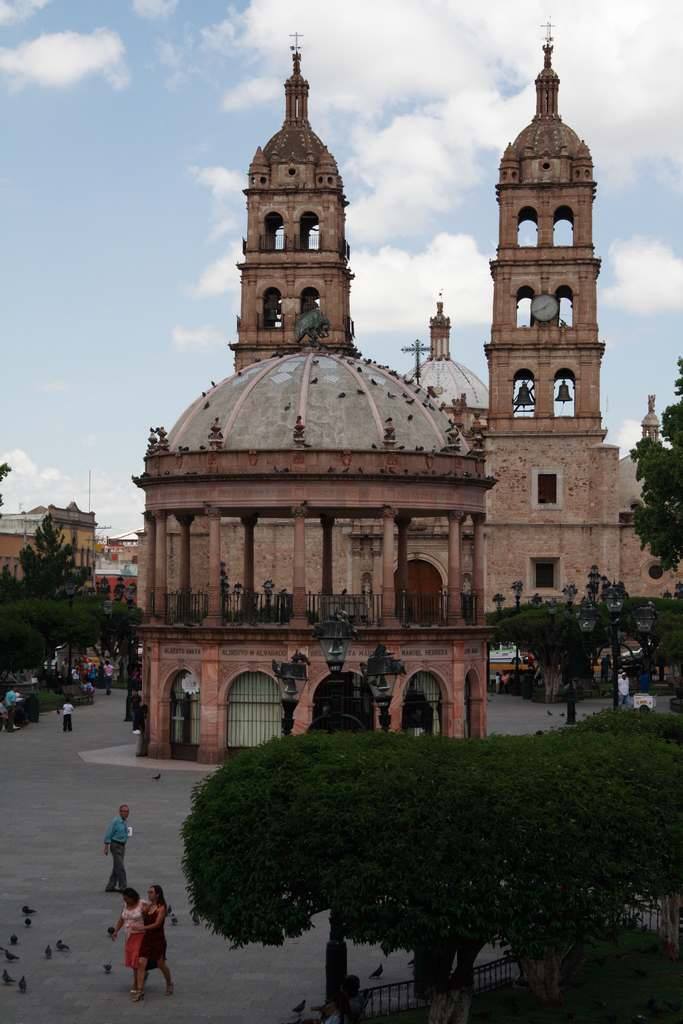
Durango, Mexico. It has a special place in my heart, my friends. Most of my family still lives there, and up to just a few months ago, my dad also lived there. It’s what you think of when you think of Mexico – cowboy boots, sombreros, horses, and trucks. But it is also deep in history and traditions. A cathedral in the capital city of Durango, Durango where I had my quinceañera and where my parents got married. 500-year-old cobblestone streets and buildings that will make you think you’re in Paris, Madrid, or Florence. Caldillo Durangueño is probably the most famous dish to come from DGO. I’m sharing it with you, but I’m mainly publishing it for my son. That he may always be proud of coming from this gorgeous state and keep our family memories alive.
Caldillo Durangueño is not something you’ll find listed on the menu of a Mexican restaurant. You’ll mostly find this dish made by little abuelitas at home. I called several family members to get their recipes until I finally played with it enough to make my own version. Caldillo Durangueño must have chile pasado. Here’s the problem: It is hard to find chile pasado even in San Diego, California, and it’s expensive. Luckily, you just need a few. So, it’s worth the buy.
Chile pasado is a poblano chile that has been roasted. The seeds and the stems have not been removed. Then dried. This chile is native to Durango and to the neighboring state of Chihuahua. Both claim ownership of this chile. Since I’m from Durango, I will say … Get your own chiles, Chihuahua! 🙂 If you can’t find it, use 2 more chile poblano. Roast, peel, and slice the poblano peppers. From here, cut them into smaller pieces to fit your spoon better.
Cut the beef into large chunks. I used a lean top sirloin because it’s less fatty. You can also use chopped and ready-to-use beef stew meat that you find at the grocery store. Or chop up a beef roast like chuck roast. Brown and drain any excess fat.
In the meantime, make your tomato mixture. Blend until smooth. Add to the pot. See how it’s more of a pink color? That’s because the tomatoes are not cooked. It will develop a stronger red color as it simmers.
Caldillo Durangueño is a Mexican stew full of deep, robust flavors and made with chiles. It’s a delicious bowl of comfort food from the beautiful state of Durango, Mexico. From my familia to yours, I hope you enjoy!
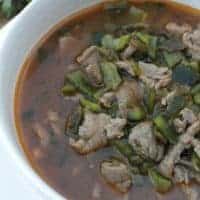
Table of Contents
Caldillo Durangueño, a Traditional Beef Stew from Durango, Mexico
Ingredients
- 2 tablespoons olive oil
- 2 lbs beef chopped into 1-inch pieces
- 1 tbspn Salt
- 1 teaspoon pepper
- 4 chile pasado toasted, cut lengthwise, deveined, and finely chopped
- 4 poblano pepper roasted, skin removed, and sliced
- 6 tomatoes diced
- ½ onion diced
- 2 garlic cloves
- 1 tablespoon whole cumin
- 8 cups beef broth divided
Instructions
- In a large stockpot, heat up the oil.
- Salt and pepper the beef.
- Add the beef to the pot and brown on all sides.
- Remove meat from pot and set aside.
- Drain any excess fat.
- Add the chile pasado and chile poblano to the pot.
- Cook for 2 minutes. Stirring constantly.
- In a blender, add tomatoes, onion, garlic, cumin and just enough beef broth to blend everything.
- Blend until smooth.
- Add the tomato mixture to the pot and stir to combine.
- Let cook for 1 minute.
- Return the meat to the pot.
- Add the remaining beef broth.
- Cover and simmer for 20 minutes.
- Don’t forget to check for salt.
- Serve and enjoy.
Notes
Nutrition
Disclosure: This post contains affiliate links.


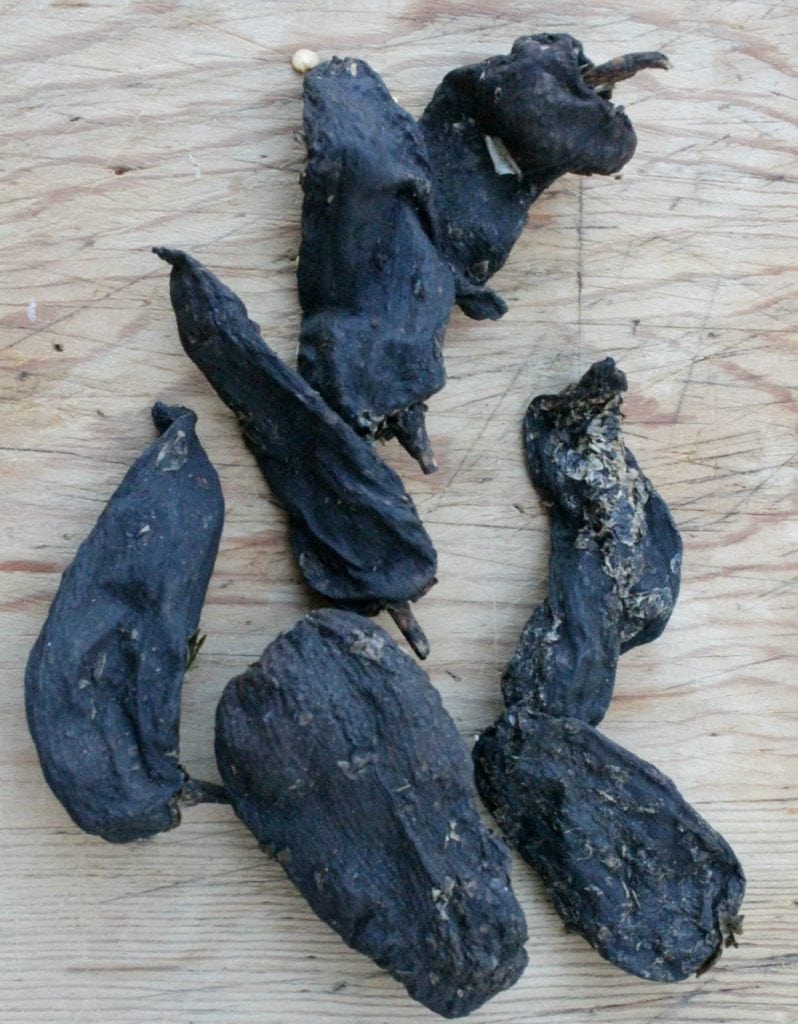
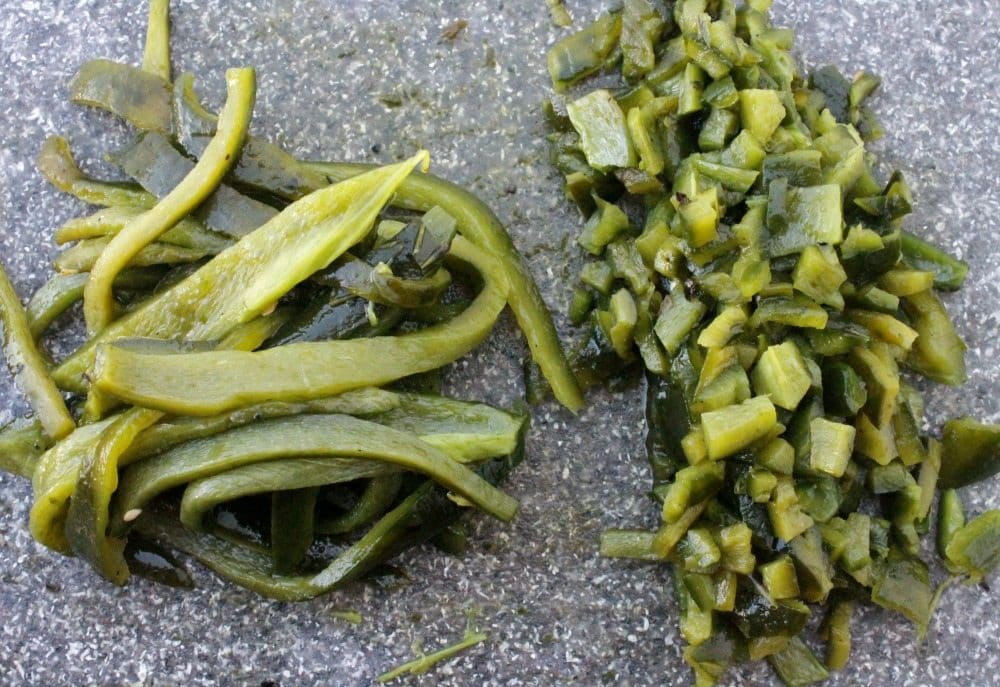
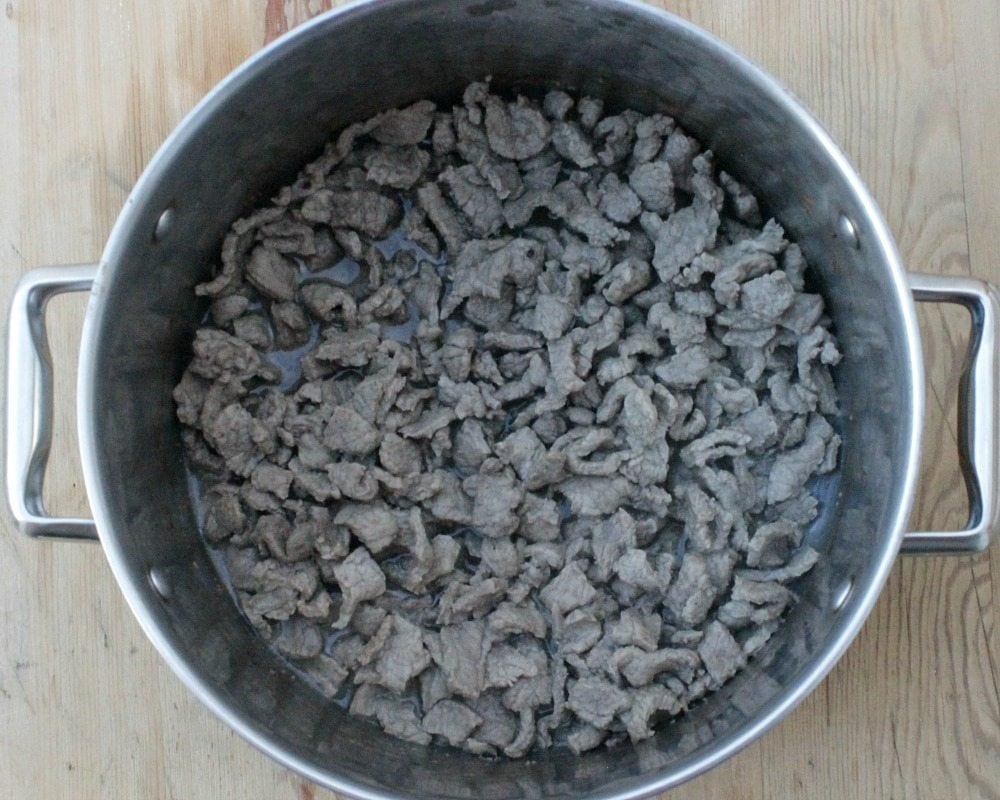
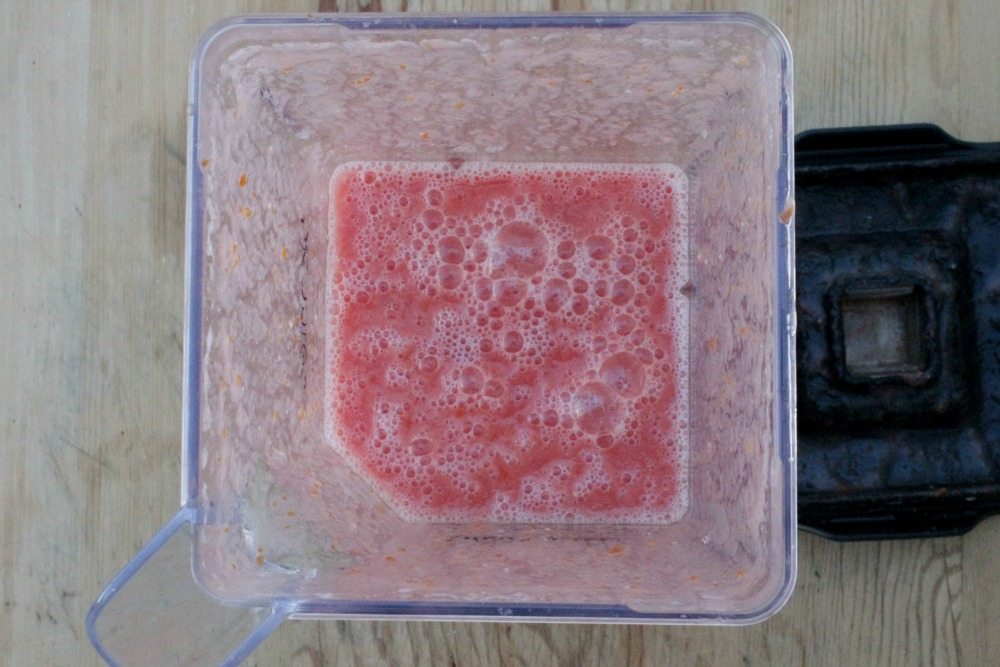
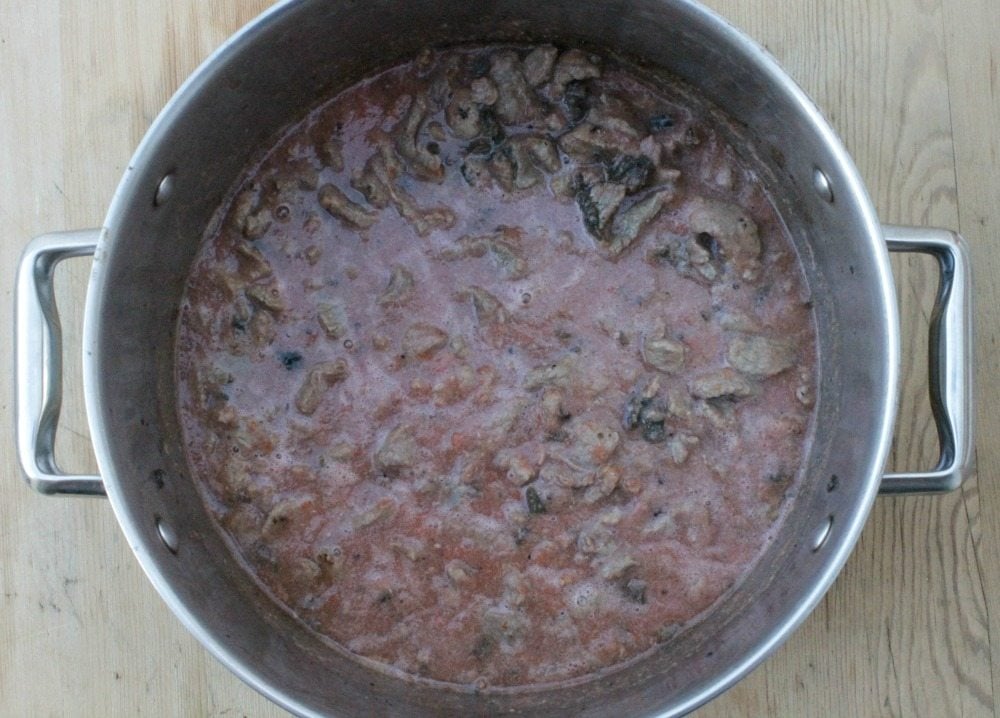








How do I modify the recipe to make in Instant Pot?
There’s really not that much of a time saver if using the instant pot. By the time the IP comes to pressure and release the vent, it’s almost the same time. But, if you want, saute and heat the oil. Brown the seasoned meat. Add the sauce and chiles. Put the lid on. High pressure 5 minutes. Release valve and serve. It takes about 7 minutes for the IP to come to pressure and about 2 minutes for it to vent. Enjoy!
I was born in Durango and grew up in Juarez. It was a favorite at home and a staple at “Comidas Corridas”. Thanks for educating me on what a Chile pasado is!!
Glad you liked it Lilia!
I was in Durango last week, and ordered this dish at a pretty up-scale restaurant: if there were chiles, onions, or tomatoes in it, I couldn’t see them. The dish was nicely spiced, but it was the consistency of a soup with minced beef…not a hearty stew. Your recipe (and the photos) looks FAR more appetizing!!
Thank you very much! This recipe is delicious. Hope you try it!
Hola Amiga, making your recipe soon🙋🏻♀️
Hola Amiga! You will love it!
Thank you for sharing your recipe. My mom recently shared her recipe with me, she is also from Durango. She never made it with Chile pasado growing up because she could only find it in Durango. She visited Durango a few months ago and brought back a huge bag of it! Now I’m trying to find all recipes I can incorporate it in.
Ooh, with chile pasado! It sounds amazing! I will definitely try this.
Hope you do. This stew is very warm and dear to my heart.
Love your blog , am from Durango too and a Unzueta too love Chile pasado and make Chile’s rellenos with it
Seguro que somos parientes. Muchos saludos.
Just tried the Caldillo, also added potatoes. I used the tomatoes in chunks. Delicious.
Thanks for the recipe almost like grandma’s cooking. ?
Awww.. that’s wonderful. It brings back some great memories of Durango.
That loooks delicious! My parents are from Durango and I lived there during my middle school years. I make this dish but add potatoes, really yummy. I also live in San Diego and Durango always has a special place in my heart. Love your blog!
That’s awesome! We have a lot in common. 🙂
Thank you for visiting my blog.
Is there a substitute for the pasado chile?
Yes. If you can’t find chile pasado, you can use more roasted poblano chile to make Caldillo Durangueño.
Chile pasado is simply twice dried poblano chile. Hope you like this recipe!
Hi.. What kind of beef did you used, this looks delicious ?
You can use whatever kind of beef you like. I go for whatever is on sale. Flap or even chop up a beef roast. Hope you like it!
This is a great story and thank you for sharing this delicious recipe.
Thank you! 🙂
This stew looks delicious! Would love to try it soon!
Hope you do. It’s a great stew!
Ha, what timing. I’ve been thinking about Mexico today too as I was painting a sugar skull and then I stumble on your Mexican recipe. Fate or what?
Totally fate! Lol.
This stew sounds amazing! Thanks for sharing a bit about your native home.
Thank you. I’ve been waiting to share this recipe for some time now.
Tomatoes are not authentic to this traditional recipe. Very 20th century!
I LOVE poblanos! This looks great!
Thank you! I love poblanos too. 🙂